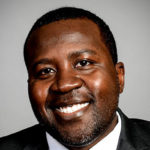- 2G or Not 2G: Patent License Applies to Future Generation Wireless Networks – Despite Evolved Wireless’s efforts to limit a licensing agreement for a cellular network patent to 3G Networks, the Federal Circuit affirmed the lower court’s decision to give “generation” a broad construction.
- Apple, AT&T, Verizon Keep Patent Validity Suits in California – VoIP-Pal.com was unable to convince the Federal Circuit to issue a writ of mandamus directing the Northern District of California to transfer its cases to the Western District of Texas.
- Federal Circuit Says PTAB Wrongly Upheld Cancer Detection Patent – The Federal Circuit overruled the PTAB’s finding of no invalidity of Melanoscan’s patent in Canfield Scientific, Inc. v. Melanoscan, LLC.
Here’s the latest.
2G or Not 2G: Patent License Applies to Future Generation Wireless Networks
Reported by Thomas DaMario at The National Law Review
In Evolved Wireless, LLC v. HTC Corp., the Federal Circuit ruled that HTC Corp. did not infringe its patent due to a previous licensing agreement. Thomas DaMario covered the opinion that centered on whether HTC’s 4G products fell under the license agreement executed by the previous owner of the patent. Evolved argued that the agreement’s language of “any subsequent generation products” did not include anything beyond the generation at the time of the agreement, 3G.
The Federal Circuit disagreed, finding that Evolved’s interpretation ignored the established meaning of “generation” in this context. The Court concluded that the license agreement covered subsequent generation products and therefore precluded infringement for the period that it was in effect.
However, the Federal Circuit pointed out that the district court did not address the potential termination of the license raised by Evolved in its summary judgment opinion. The Federal Circuit remanded the case for further fact finding on this matter to determine its effect on summary judgment.
For more information, see our coverage.
Apple, AT&T, Verizon Keep Patent Validity Suits in California
Reported by Perry Cooper at Bloomberg Law
The Northern District of California stayed within its discretion in denying VoIP-Pal.com’s efforts to transfer cases according to the Federal Circuit’s opinion in In re VoIP-Pal.com, Inc. Perry Cooper recapped the opinion which allowed the declaratory judgment suits filed by Apple, AT&T, and Verizon Wireless to remain in California. VoIP-Pal.com argued that its infringement suits filed in the Western District of Texas should result in the application of the first-to-file rule and a transfer. However, the Federal Circuit disagreed.
The first-to-file rule is not absolute and its application is “ultimately committed to the district court’s discretion,” the Federal Circuit said. The Northern District of California “previously wrote a total of 113 pages on the validity of the patents, suggesting the court has considerable familiarity with overlapping validity issues in these cases,” the appeals court said.
For more information, see our coverage.
Federal Circuit Says PTAB Wrongly Upheld Cancer Detection Patent
Reported by Tiffany Hu at Law360
The Federal Circuit issued an opinion on Thursday reversing the PTAB’s decision on the nonobviousness of Melanoscan’s patent on melanoma screening technology. Tiffany Hu summarized the case that began with Canfield’s original suit in 2016 for noninfringement. This initial suit spawned counterclaims of infringement by Melanoscan and another counterclaim of invalidity by Canfield. Canfield also challenged the patent at the PTAB whose decision to uphold the patent was overturned by the Federal Circuit. The PTAB had determined that Canfield had not shown with particularity that the challenged claims were obvious.
But the panel said that the board failed to consider the various placements of the subject within a multi-camera system as described in the other prior art references, which it said rendered two of the disputed claims obvious. “We conclude that the subject matter described in [the two claims] would have been obvious to a person of ordinary skill in the field of the invention,” U.S. Circuit Judge Pauline Newman wrote for the panel.
For more information, see our coverage.

